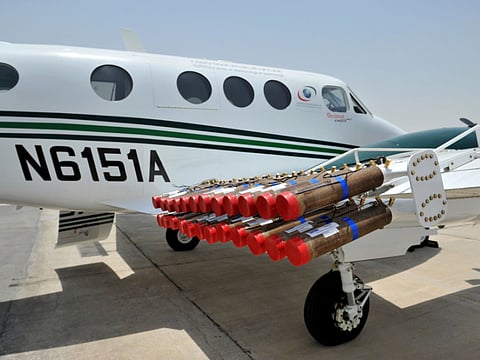How cloud seeding helped increase last week’s rains
The National Centre of Meteorology revealed that it carried out special missions in 4 days

Dubai: The unpredictable weather earlier this week led to rain, hailstorms and even snow in various areas across the UAE.
The National Centre of Meteorology (NCM) confirmed to Gulf News on Thursday that the weather change came as a result of 16 cloud-seeding missions that were carried out during four days.
“The cloud seeding missions were carried out from Friday December 15 to Monday December 18, when convective clouds formed over the mountain region, which led to successful results,” said a weather forecaster at the NCM.
Cloud-seeding missions can only be carried out when there are cloud formations over the UAE, which are spotted by a sophisticated radar.
During the mission, a plane enters a cloud and fires salt crystal flares into naturally occuring overcast skies, which encourages the formation and release of cloud moisture into raindrops.
The NCM confirmed that the cloud-seeding mission contributed to an increase of 20 per cent in rainfall across the UAE.
The highest rainfall was recorded on the UAE's eastern coast, with five areas recording over 100 mm of rain, including:
Port of Fujairah 137 mm
Dhadnah 126.2 mm
Foah 125.6 mm
Fujairah Airport 107.6 mm
Khor Fakkan 101.6 mm
Sign up for the Daily Briefing
Get the latest news and updates straight to your inbox



